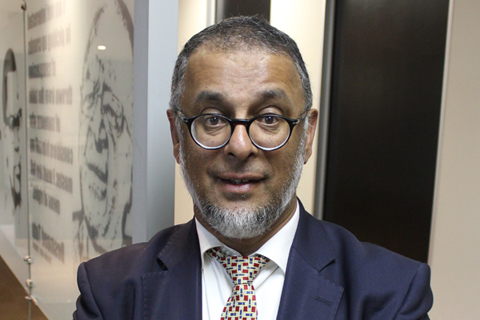By Katie Smoleny
From Compass
Ohio University’s Wealth and Poverty curricular theme kicked off its first-ever weeklong “Wealth and Poverty in Appalachia” series with a lecture from a West Virginia University professor who’s conducted research on the effects of welfare reform in the Mountain State.
“The people who designed (welfare reform) underestimated the multiple and complex challenging barriers that welfare recipients have to negotiate in order to become economically self-sufficient,” Dr. Melissa Latimer told those who attended her April 6 lecture in Baker University Center. Watch her talk on A&S TV.
A professor of sociology and director of the West Virginia University ADVANCE Center, Latimer served as the keynote speaker for the “Wealth and Poverty in Appalachia” series, delivering a presentation titled, “Welfare Reform in West Virginia: A Case Study of Appalachia.”
Latimer’s areas of research include inequality, labor market processes and welfare policies, and her lecture delved into research findings on the effects of welfare reform in West Virginia with a specific case study of rural, Appalachian areas. Her research focuses on the place-specific consequences of Temporary Assistance to Needy Families (TANF) on economically disadvantaged adults, their families and the caseworkers who manage their assistance.
Latimer explained that the Personal Responsibility and Work Reconciliation Act of 1996, also known as federal welfare reform, replaced the Aid to Families with Dependent Children (AFDC) program with TANF, a state-centered block grant in which the funds allocated to each state are fixed. Under the legislation, states could design their own welfare systems, keeping in mind the fixed federal funding.
 According to Latimer, the resulting welfare reform in West Virginia tightened the eligibility criteria for most assistance programs, including TANF, food stamps and Medicaid. The consequences of those reforms impacted not only those receiving the assistance but also the poverty rates of the state’s communities. When a large percentage of families are receiving food stamps and using them in local businesses, Latimer said, those businesses rely on that form of compensation to keep operating.
According to Latimer, the resulting welfare reform in West Virginia tightened the eligibility criteria for most assistance programs, including TANF, food stamps and Medicaid. The consequences of those reforms impacted not only those receiving the assistance but also the poverty rates of the state’s communities. When a large percentage of families are receiving food stamps and using them in local businesses, Latimer said, those businesses rely on that form of compensation to keep operating.
“When you take away food stamps from the families, the negative ramifications aren’t just for the families. They are hurting the local businesses as well,” said Latimer.
In conducting the case study, Latimer discovered what she called many key flaws with TANF and welfare reform. She explained that while the goal of TANF and welfare reform is to wean recipients off of assistance and help them find steady employment, many individuals who receive assistance face multiple barriers to that end goal. Among those barriers are lack of transportation, lack of a high school diploma or GED, disability, or lack of a telephone, which affects the ability to find a job.
“Over two-thirds of the people that we surveyed in West Virginia had at least two of these barriers,” Latimer explained. “The more barriers, the more complicated it is to find a job.”
Latimer noted that she and her colleagues have spent numerous hours helping individuals on public assistance obtain their GEDs, which research has shown is likely to help them find gainful employment and move off of assistance. But, she said, those individuals are still limited by the number of job opportunities available.
“TANF creators also miscalculated the ability of local labor markets to generate enough jobs,” she explained. “When we spoke to caseworkers, they said, ‘We know every park ranger, deacon and potential employer in this area. We are the first people they call when there is a job opening. But requiring us to put people in jobs does not make jobs appear.’”
In order to comply with welfare reform and keep their numbers in line with government funding, Latimer said many caseworkers are being asked to perform multiple jobs and spending more time on paperwork, which results in less time spent on clients.
Latimer concluded her presentation by noting that since welfare reform was implemented in West Virginia, there haven’t been any significant changes or shifts in the state’s poverty rate or unemployment rate.
“This lecture really opened my eyes to the flaws in the welfare system,” said Bailey Watroba, a first-year journalism major who attended the lecture with her political science class. “It seems like there are ways to correct them, so I hope it gets fixed sooner rather than later.”
“This is my first experience learning about the welfare system or welfare reform, but Dr. Latimer made it pretty obvious that there is work to be done in West Virginia and across the nation,” said Allie McKahan, a sophomore education major.
Sign up for Wealth and Poverty theme updates.



















Comments